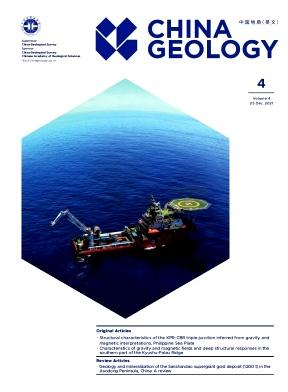Application of geophysical methods in fine detection of urban concealed karst: A case study of Wuhan City, China
IF 4.7
3区 地球科学
Q1 GEOSCIENCES, MULTIDISCIPLINARY
引用次数: 0
Abstract
The construction of modern livable cities faces challenges in karst areas, including ground collapse and engineering problems. Wuhan, with a population of 13.74×106 and approximately 1161 km2 of soluble rocks in the urban area of 8569.15 km2, predominantly consists of concealed karst areas where occasional ground collapse events occur, posing significant threats to underground engineering projects. To address these challenges, a comprehensive geological survey was conducted in Wuhan, focusing on major karst-related issues. Geophysical methods offer advantages over drilling in detecting concealed karst areas due to their efficiency, non-destructiveness, and flexibility. This paper reviewed the karst geological characteristics in Wuhan and the geophysical exploration methods for karst, selected eight effective geophysical methods for field experimentation, evaluated their suitability, and proposed method combinations for different karst scenarios. The results show that different geophysical methods have varying applicability for karst detection in Wuhan, and combining multiple methods enhances detection effectiveness. The specific recommendations for method combinations provided in this study serve as a valuable reference for karst detection in Wuhan.
地球物理方法在城市隐蔽岩溶精细探测中的应用:中国武汉市案例研究
在岩溶地区建设现代宜居城市面临着地面塌陷和工程问题等挑战。武汉市人口为 13.74×106 人,市区面积为 8569.15 平方公里,可溶性岩石面积约为 1161 平方公里,主要由隐蔽的岩溶地区组成,地面塌陷事件时有发生,对地下工程构成重大威胁。为应对这些挑战,我们在武汉开展了一次全面的地质调查,重点关注与岩溶有关的主要问题。地球物理方法因其高效、非破坏性和灵活性,在探测隐蔽岩溶地区方面比钻探更具优势。本文回顾了武汉的岩溶地质特征和岩溶地球物理勘探方法,选择了八种有效的地球物理方法进行野外试验,评估了这些方法的适用性,并针对不同的岩溶情况提出了方法组合建议。结果表明,不同地球物理方法对武汉岩溶探测的适用性不同,多种方法的组合可提高探测效果。本研究提出的方法组合具体建议可为武汉岩溶探测提供有价值的参考。
本文章由计算机程序翻译,如有差异,请以英文原文为准。
求助全文
约1分钟内获得全文
求助全文

 求助内容:
求助内容: 应助结果提醒方式:
应助结果提醒方式:


